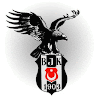By creating a specialty shop dedicated to the sale of blue jeans, Mr. Fisher hoped to capitalize on the 'gap' that had opened in the market.
The Gap brand has grown since its modest start in 1969 to include: Gap, Gap Outlet, GapKids, babyGap, GapBody, GapMaternity, Love Me Gap, Old Navy, Banana Republic, and Forth & Towne. Banana Republic, formerly a catalog retailer selling safari themed clothing, was purchased by Gap in 1983, and eventually rebranded as an upscale clothing retailer. Old Navy, was launched in 1994, as a value chain with a specialty flair. Forth & Towne, the company's fourth traditional retail concept, was launched on August 24, 2005, featuring apparel targeted toward women 35 and older.
Although successful in the US, “The Gap” faces stiff competition abroad from Swedish H&M, its main competitor in Europe.
While labor in countries like China, India, and Mexico gets cheaper the future for The Gap stores and its customers is bright. With low manufacturing cost the company will be able to pass on the savings to the consumer.
Though under one brand, the stores that belong to The Gap company name could not be more different. Men’s underwear at Old Navy will cost the consumer from $4 to $7 dollars, while a similar pair at the Banana Republic will sell for $15 to $20, and finally for $22 or more at The Gap. Where the underwear is very similar in material, the main difference is the name. The branding of these stores has been so successful that consumers will pay the difference in order to wear brand name underwear, observed as being much higher quality.
With so many stores under one roof The Gap truly benefits from mass scale production. With clothing production streamlined, websites similar in design, and customer service almost identical, the Gap is able to offer customers a great service and product at a competitive rate.
Source: http://www.edmunds.com/














0 yorum:
Post a Comment